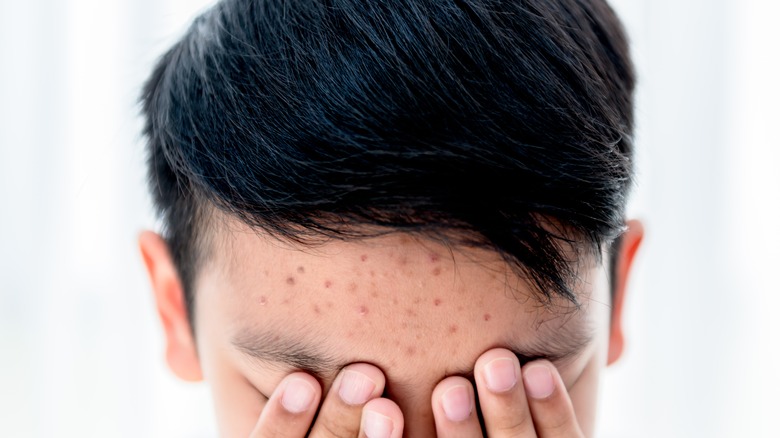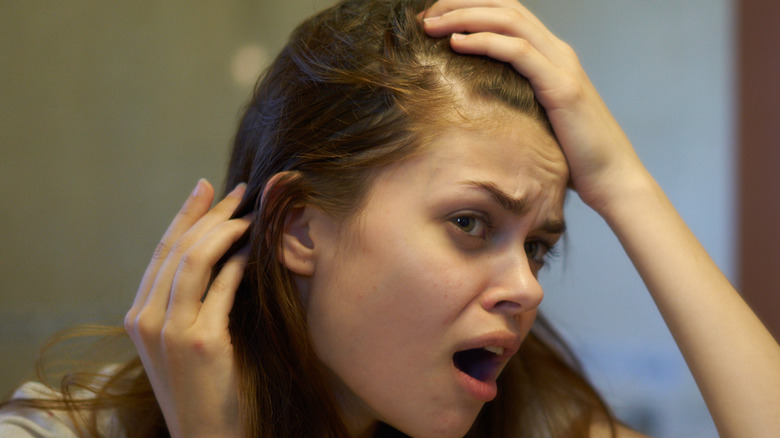If You Have Acne Along Your Hairline, Here's What You Should Do
The Mayo Clinic defines acne as a condition of the skin marked by clogged hair follicles. It can present in various ways, such as pimples or blackheads, but it's caused by the skin's natural oil and dead skin cells — as they make their way into the pores of the skin, they can lead to points of inflammation. If you have acne, you may notice small pustules, red bumps, black dots, cystic lesions, and tender lumps trapped under the skin. It'll also likely appear on the forehead and general face region, the upper back, chest, and shoulders.
In addition to the surface causes of acne, the Mayo Clinic points to other triggers that can worsen the condition. Hormones are a major contributor to acne, specifically androgens. Their production begins in puberty and leads to increased oil production on the skin. While most incidences of acne clear up after adolescence, these hormonal changes can continue throughout adulthood and contribute to breakouts. Other triggers are certain medications, diets rich in carbohydrates, and stress.
According to the American Academy of Dermatology Association, acne affects an overwhelming number of people in the U.S. — specifically around 50 million individuals on a yearly basis. The high prevalence of the condition also leads many people to seek medical assistance to treat it. In 2013, Americans spent $1.2 billion to treat their acne.
If you're looking for ways to treat your acne — specifically the stubborn type that nestles along your hairline — we have some tips.
Understanding what's causing your hairline acne
In order to treat hairline acne, it's important to understand the different types. Byrdie points to two common types of hairline acne: inflammatory papules and fungal acne. The former is characterized by bumps that are pink in color, while the latter features pores clogged with yeast from a fungal infection. However, any type of acne that occurs elsewhere on the body can be found emerging along the hairline as well. It ultimately boils down to clogged hair follicles.
Surgical dermatologist Naissan O. Wesley expanded on the types of hairline acne to Byrdie. She pointed out that the most common cause of hairline breakouts is hair products. In this case, it's important to avoid certain ingredients in hair products, including any oils and butter. Another factor in hairline acne is the use of hats, headbands, helmets, or scarves. The build-up of sweat and dirt from these items can clog pores. To avoid breakouts, wash these materials frequently, and avoid using them if that doesn't help. Other causes include not washing the hair and scalp enough and eating inflammatory foods, such as dairy.
The treatment of hairline acne ultimately depends on the cause, but Wesley has a tip that can apply to most situations. "Engaging in a regular non-comedogenic skin care routine to increase skin cell turnover, reduce clogged pores, and decrease inflammation of existing lesions is key," she told Byrdie. Any skin-cleaning products should also feature antibacterial and antifungal properties for the best results.


